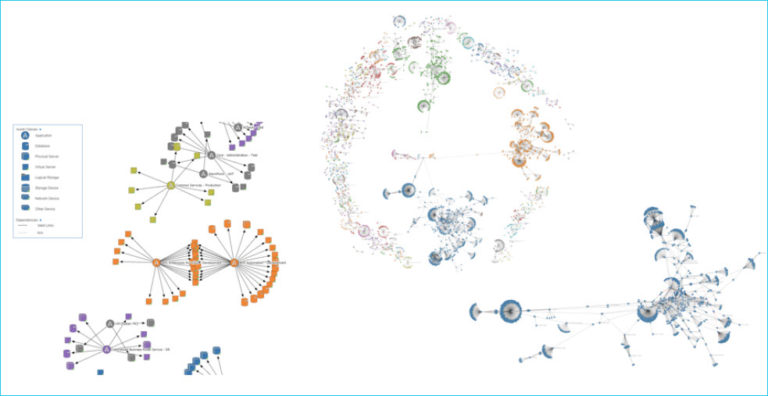Accelerate and De-Risk Data Center Migrations - Even in the Midst of a Global Pandemic
 Data center migrations are complex, daunting, high risk projects. And since they’re not an everyday event, many IT professionals do not ever participate in one, creating a dearth of migration experience in most organizations.
Data center migrations are complex, daunting, high risk projects. And since they’re not an everyday event, many IT professionals do not ever participate in one, creating a dearth of migration experience in most organizations.
So imagine if your organization is in the midst of planning a migration to a new data center, and then your team learns it also has to manage an acquisition, incorporate the new company’s IT assets into your organization, migrate their users to standard corporate systems and then decommission the old systems?
And on top of all that, just when you begin to figure this out, a pandemic hits.
Managing unexpected change in IT is par for the course, but COVID took us all to unchartered territory, pushing the limits of our ability to support remote work and respond to dynamic business conditions.
No matter what type of change your organization is facing, there are three fundamental pillars upon which IT can de-risk and efficiently plan, manage, and execute a complex migration, regardless of what other turbulence may come your way:
- Insight to understand interrelationships across apps and other assets
- Collaborative and flexible planning with transparency across business and IT teams
- Automated orchestration and execution at scale of even the most complex processes
Here’s why these pillars are so important.
Transform IT to Enable Digital Transformation
Businesses are under pressure to quickly realize the benefits of digital transformation (DX). But successful DX requires that IT first transform itself so it is able to better respond to rapidly changing business needs. This transformation is multi-faceted; it means consolidating data centers, migrating to new data centers, and adopting cloud platforms to leverage new technology, such as AI and IoT solutions that may run at the edge. It means transforming processes into digital workstreams that streamline operational efficiency. And it means maintaining resiliency for legacy apps that run core business functions while trying to refactor their key components to better integrate with modern services.
To transform, IT must be able to manage a continuous state of transition – able to access accurate, comprehensive technical and business data to make good decisions, work across business and IT teams to assess and evaluate data from purpose built tools, coordinate projects and schedules across organizational units, and automate the execution of complex, cross-silo processes to move faster while mitigating risk to business.
Applications are king
Understanding your environment from a business-focused, app-centric perspective is the first step in building a solid foundation for a successful, complex event like a data center migration. You’re not just moving servers – you’re moving applications! That’s where the focus must be.
Apps run your business, they are how you interact with partners, prospects, customers, vendors, and employees. And yet, most IT organizations do not have a single source of data to enable them to understand what apps they have, what other assets they are dependent upon, or what their technical requirements and limitations are.
Data is typically spread across CMDBs, DCIMs, homegrown databases and file systems. Different users have access to different systems – no single user has insight across the entire environment. And most organizations combine exports from each system into a set of spreadsheets to map dependencies and identify asset relationships.
That’s hard. Humans can’t easily identify relationships, conflicts, or duplicate data from spreadsheets. It’s critical to be able to visualize your environment – how every application is connected to its dependencies across hosting sites. Only then can you begin to plan and make better decisions about how to move apps without bringing other systems down.
TDS practitioners built TransitionManager to overcome these challenges, aggregating and normalizing data from multiple sources, and then immediately displaying it visually in an interactive map showing application dependencies across the servers, databases, and other systems with which they interact. This enables everyone on a project team to easily see how their enterprise’s IT environment works.

To augment the dependency mapping, each node in the map provides 1-click access to detailed information about the asset, such as app owner, OS type, RTO, and other technical data points. This accelerates the first step in any migration project and enables app owners to quickly validate accuracy in an average of 20 minutes or less. This entire process – from data aggregation, normalization and validation – can be done remotely, with stakeholders accessing the same data through browser access to the SaaS instance.
Collaborate and Plan with Transparency – Across Silos
Project teams need more than just technical data to make good decisions. They need to understand how business uses apps, what the future plan is for each app, as well as compliance, criticality, recovery requirements and other key business facts. This data is critical when deciding which apps to move together, when to schedule move events, and in resource allocation. For example, two resources must move any servers that contain apps with HIPAA data, and apps with PCI data have geographical limitations about where they can be hosted.
Planning decisions should consider the future state of apps. For instance, which need to integrate with new services and systems and where will those be hosted? Which will require modernization, containerization, or be retired? Moving apps to a new data center without this insight could result in unnecessarily incurring expenses for apps that will be migrated to the cloud, replaced with SaaS offerings, or decommissioned.
During COVID, several of our clients implemented furloughs that had a direct impact on project resource levels. Teams need flexibility to adjust assets assigned to move groups, resource staffing levels, and migration schedule dates – even at the last minute – all while staying on schedule by swapping apps in and out of move groups while maintaining committed outage windows.
When one of our clients needed to manage an acquisition and integrate systems during the midst of planning migration move groups, TransitionManager’s functionality for dynamically creating, modifying, and visualizing the assets – and potential conflicts – in each group played a vital role. Teams could quickly identify problems, make adjustments, and build new move groups, confident that there would not be service disruption to other systems.
Too often teams struggle with managing systems across multiple spreadsheets and project management software to track app assignments in and out of move events. Without a single, efficient system for managing change across an IT transformation project, frequent and often complex changes can significantly increase both project duration and cost.
Automated Orchestration of Migration Events – at Scale
Most organizations plan data center migration events in three distinct phases: Discovery of their data, Planning and Analysis, and Execution of the events. But the reality is that any migration is much more iterative and phases overlap. This becomes evident when teams begin dry-runs at the beginning of the execution stage and gaps across critical steps are exposed such as configuring environments or servers, or ensuring handoffs are in place between manual and automated tasks.
It is difficult and time consuming to identify and fix these gaps when multiple systems are used to track task progress and resource readiness as information is spread across email, project management tools, and texts.
TransitionManager provides a single platform that makes it easy to both identify and remedy conflicts and holes in an execution workstream. Runbooks are dynamically generated, reflecting the current state of app dependencies to outline the precise sequence of human and automated tasks. So, when new apps are added to a move group or a new step is added to a workstream, regenerating the runbook ensures teams have an accurate process for executing.
Configuration of target environments, transport tools, and other automated systems often require multiple data points during setup. This manual process is time consuming and prone to errors. TransitionManager enables teams to pre-configure these systems, eliminating errors and accelerating the ability to migrate at scale.
And, all stakeholders can monitor migration events with real-time task graphs, queues for task owners that enable action on a task only when all preceding tasks have executed successfully, and the ability to run automated tasks with or without manual invocation.
Most IT organizations have many automated systems to accelerate processes, but each system is discrete; TransitionManager orchestrates automation by enabling tools to work together in a toolchain that fills gaps and minimizes the number of resources needed to monitor processes.
As COVID’s impact on businesses continues to evolve, one thing remains clear: the ability for IT to respond rapidly to change is the only way to succeed at DX and stay competitive.
Businesses and IT leaders who incorporate the three pillars necessary for a successful IT transformation–insight into their app environment, transparency across IT and business teams and automation to allow transformation at scale–will ensure they can not only complete a successful data center migration, but can take on any challenges in the years ahead.
We put together a short guide which includes 5 fundamental steps you can take to take ownership of your IT environment.
